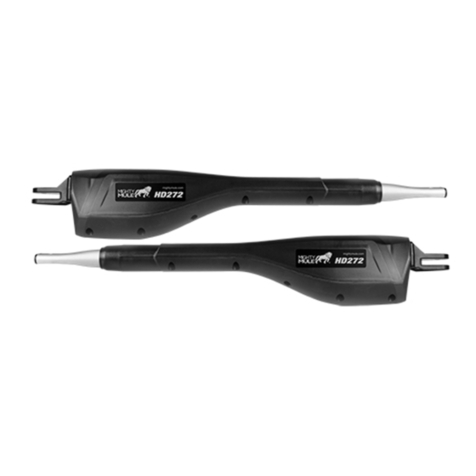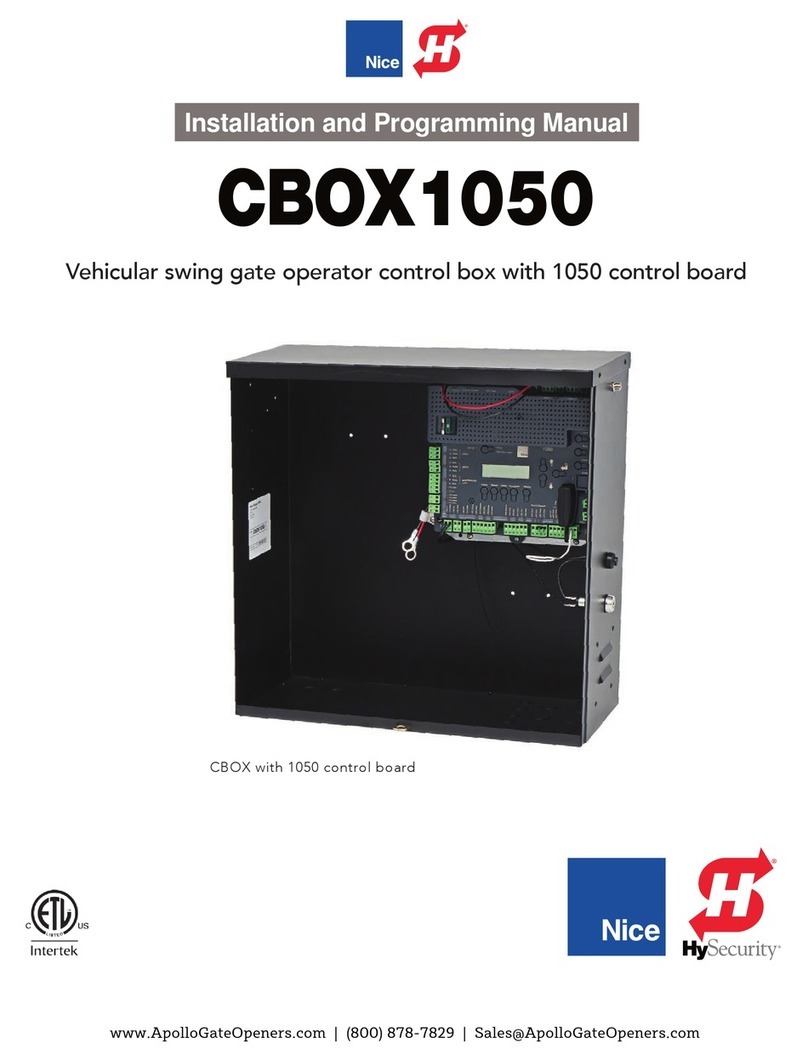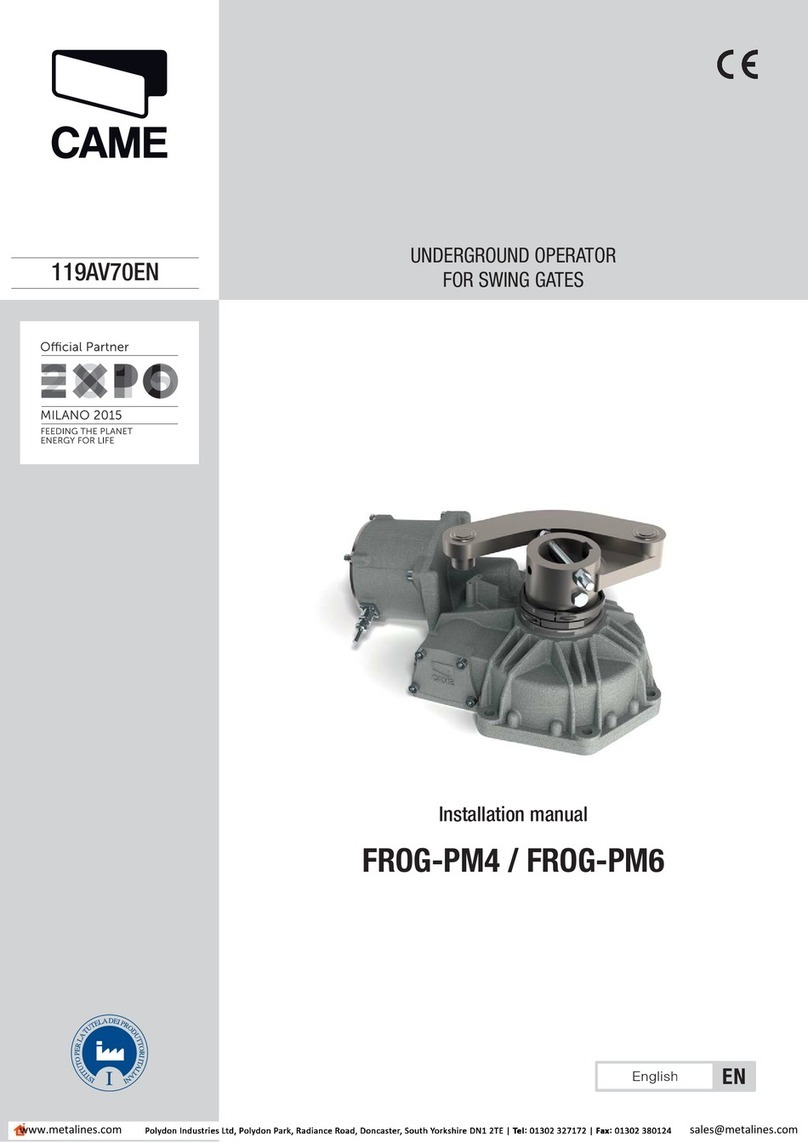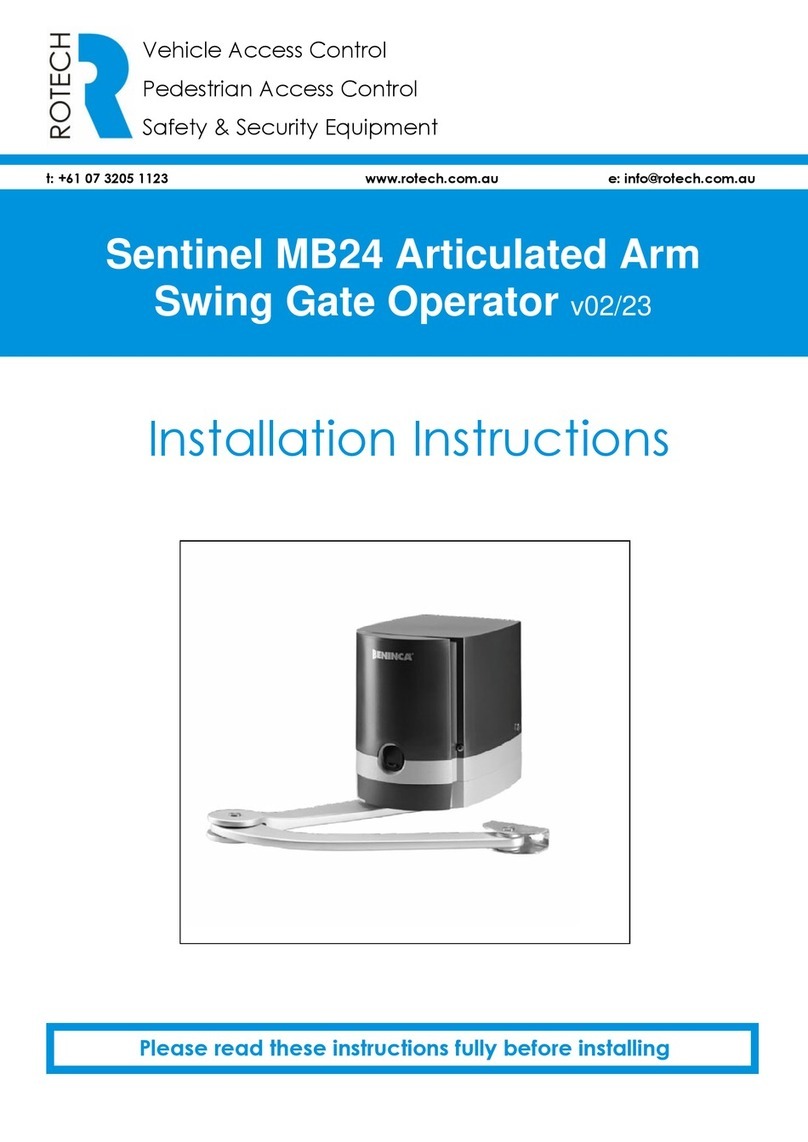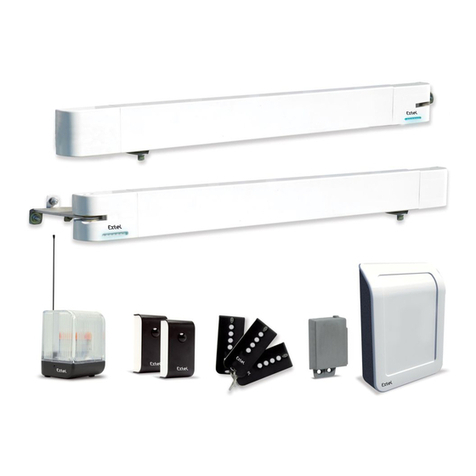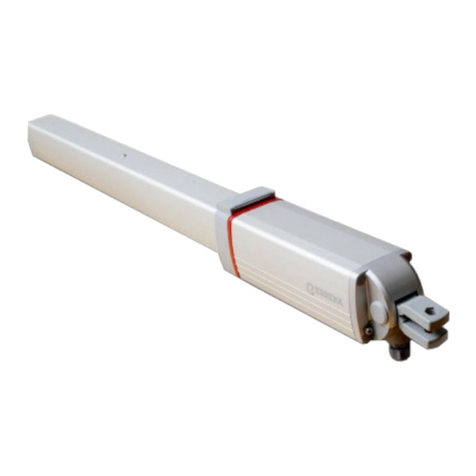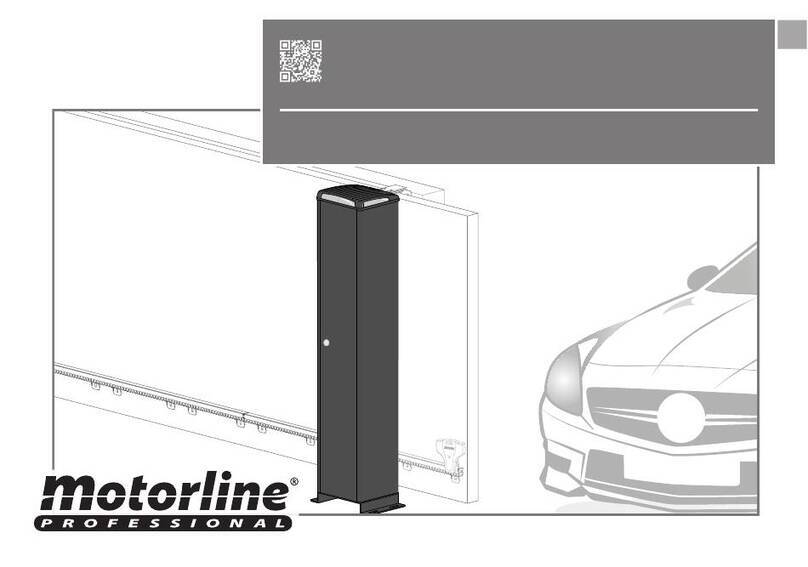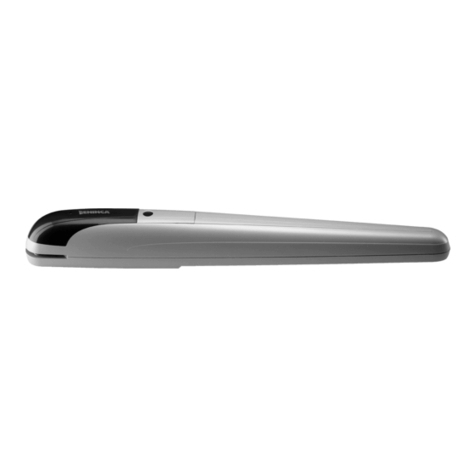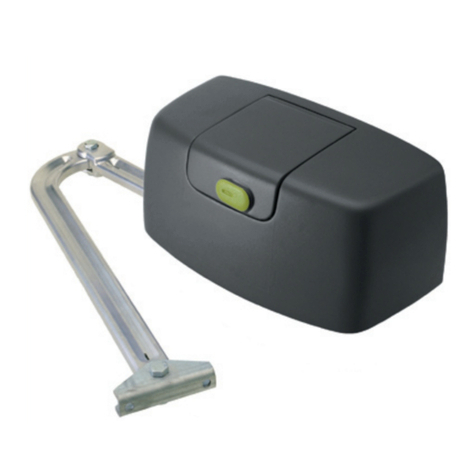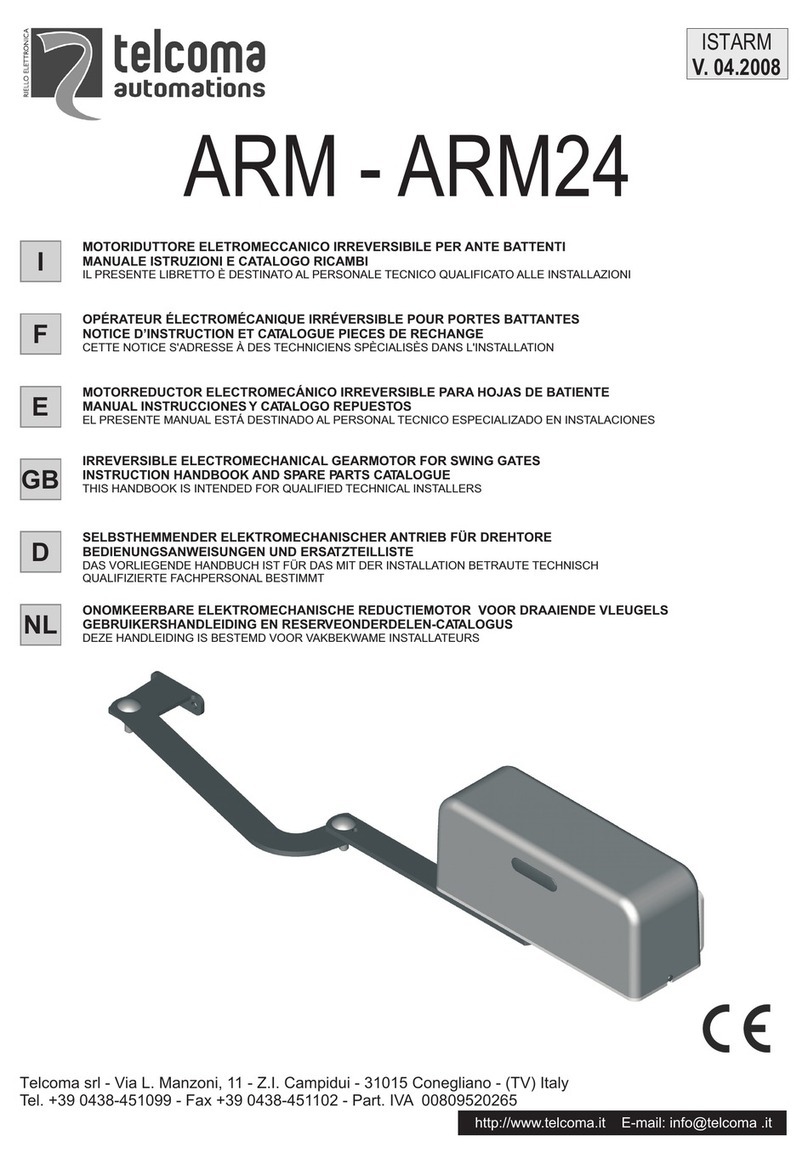
21
1) GENERAL FEATURES
Automation with single-phase power supply for sliding gates
2)GENERAL INFORMATION
For an efficient operation of the sliding automatic mechanism, the gate must have the following features:
- The guide rail and its wheels must be suitable in size and mantained to prevent gate from excessive sliding friction.
- When running, gate must not rock excessively.
- Opening and closing stroke must be regulated by a mechanical limit stop (to safety standard in force).
3) TECHNICAL DATA
BULL 17 OMI BULL 17 OMAI
Feed 230Vac 50/60Hz 115Vac 60Hz
Absorption 7 A 8 A
Torque 68 Nm 40 Nm
Inverter Yes Yes
Operating jogging 40% 40%
Protection degree IP44 IP44
Working temperature -20°C / +50°C -20°C / +50°C
Max. gate weight 1700 kg 1700 kg
Rack modulus M4 Z 18* M4 Z 18*
Opening speed 24 m/min MAX 24 m/min MAX
Noise level <70 dB <70 dB
Lubrication Oil Oil
Weight 21,3 kg 21,3 kg
*M6 Z13 (art. RI.P6 - optional)
4) INSTALLATION OF THE FOUNDATION PLATE
Dimensions of the foundation plate are shown in Fig. 2.
It is essential to keep the distance from the rack, in order to position and remove the actuator once the rack is fitted to the gate leaf.
The types of fittings of the foundation plate are mainly the following:
1 Installation without adjustment in height on the already existing base in concrete (Fig.2).
By using the plate as drilling template, drill 4 holes Ø10mm, and insert the steel threaded screw anchors, Ø10x120mm, similar to those shown in Fig. 2.
Lock the actuator directly to floor, as indicated in Fig.7.
1) GENERAL FEATURES .................................................................................21
2)GENERAL INFORMATION ............................................................................21
3) TECHNICAL DATA ......................................................................................21
4) INSTALLATION OF THE FOUNDATION PLATE...............................................21
5) RACK FIXING.............................................................................................22
6) LIMIT STOP FLASK POSITIONING (SEE FIG.10)...........................................22
7) HOW TO INSTALL THE MAGNETS(BULL 17 OMI.S/BULL 17 OMAI.S) FIG.11 22
8) MANUAL OPERATION (SEE FIG.12-13-14)..................................................22
9) WIRE DIAGRAM.........................................................................................22
10) CP.YAK OTI CONTROL UNIT......................................................................22
10.1) INPUT/OUTPUT FUNCTIONS........................................................... 22
10.2) HOW TO CHECK CONNECTIONS..................................................... 23
11) PROGRAMMING ......................................................................................23
12) TO ACCESS PROGRAMMING....................................................................23
12.1) RUN SELF-LEARNING AND ANTI-CRUSHING DEVICE SETTING ........ 23
13) PARAMETERS, LOGIC AND SPECIAL FUNCTIONS .....................................24
14) HOW TO ADJUST SPEED AND BRAKING...................................................26
15) AUTOSET ................................................................................................27
16) ERROR MESSAGES .................................................................................28
17) DISPLAY LCD ..........................................................................................28
18) DIAGNOSTICS .........................................................................................28
19) MAINTENANCE........................................................................................29
INDEX
QUICK PROGRAMMING
- Set the motor position by means of the menu MINV, by default the automation is set as LEFT MOTOR
- Enter the menu AUTO, confirm 2 times with <PG> and wait until the automation has carried out the autoset of the parameters
- By means of the menus PAR and LOG, select the parameters and the logic functions wanted according to the type of installation in object
IMPORTANT:After every change of the parameters FSTS. SLDO, SLDC, TSMO, TSMC, the automation executes an opening maneuver followed
by a closing one in order to acquire the new values of current and torque, on the screen will appear the message <PRG>
- To store the transmitter press the receiver button plug.
